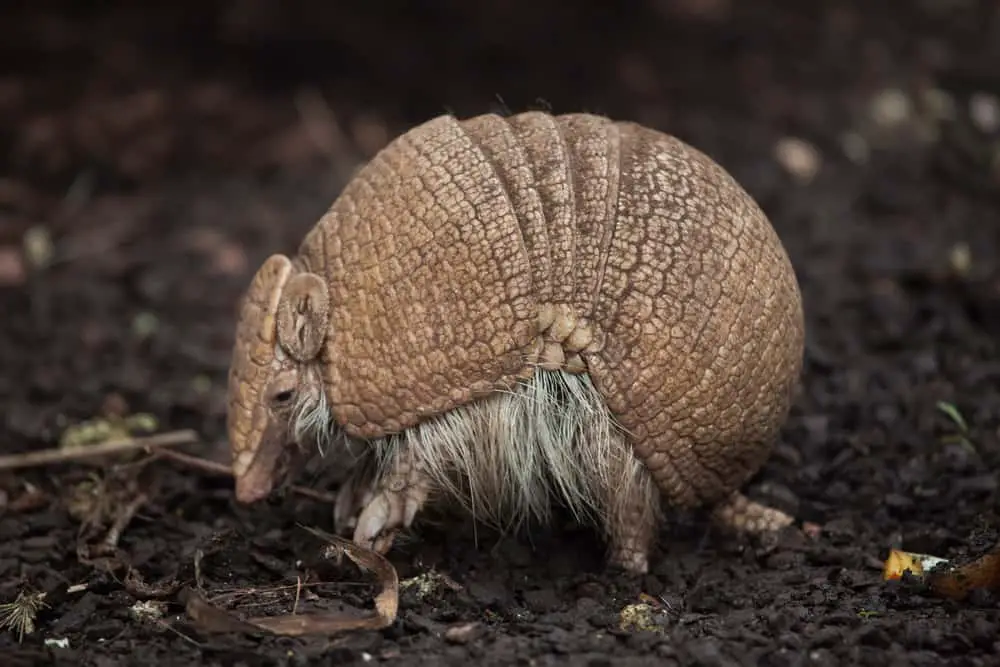
Armadillos, “little armored ones,” are New World placental mammals. They have greyish-brown oval bodies with long, tapering tails; pointy snouts, leathery armor shells.
Most species can be found in South America, although some have expanded northward. The Nine-banded armadillo is the only one that made it to the United States. Some have been found as far north as Missouri.
They live 7 to 10 years in the wild. Giant armadillos have been found to be as large as 59 inches and 119 pounds. Average armadillos are 25 to 48 inches long and weigh 8 to 18 pounds.
They live in warm, moist climates and favor forested areas and grasslands with loose soil. They dig burrows to live in with their sharp claws. They also dig for their food. Some roll up in a tight ball when threatened.
They are solitary creatures, except while breeding or caring for their young.
Table of Contents
- Anteaters
- Sloths
- Pangolins
- Turtles
- Tortoises
- Terrapins
- Indian Rhinoceroses
- Thorny Devils
- Alligators
- Saltwater Crocodiles
- Sea Urchins
- Crabs
- Lobsters
- Crayfish
- Shrimp
Anteaters
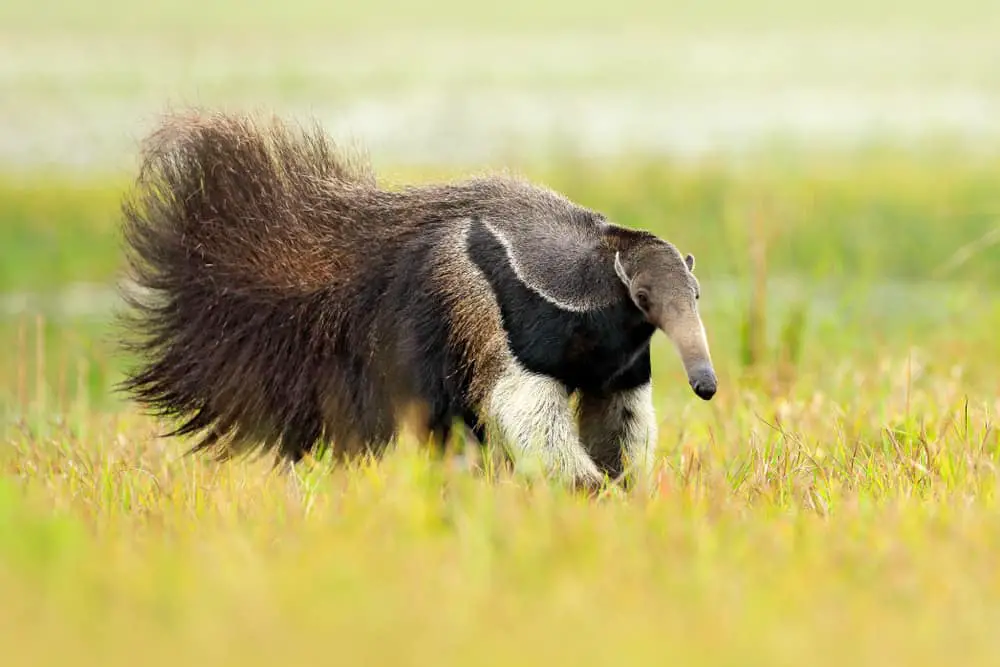
Anteaters are mammals. They are members of the suborder Vermilingua, or “worm-tongue.” They live 15 years on average.
They have long noses and long sticky tongues that extend longer than their heads. This makes it easy for them to feed on ants and termites. They have no teeth.
The giant anteater is by far the largest at 5 feet, 11 inches. It weighs up to 90 pounds. Smaller species of anteaters are 14 inches to 3 feet, 11 inches.
They live in South America, but some have extended their range up into Mexico. They are closely related to the sloths and the armadillos but have no armor.
Their habitats are varied, including grasslands, rain forests, and dry tropical forests.
Their body temperature varies between 91 and 97 degrees F. Their daily behavior is mainly an effort to manage their temperature, heating up during foraging, and keeping cool during rest periods.
Anteaters are similar to armadillos in that they share the same backbone structure that permits them to engage in climbing and burrowing. They differ from armadillos in that they have no armor.
Sloths
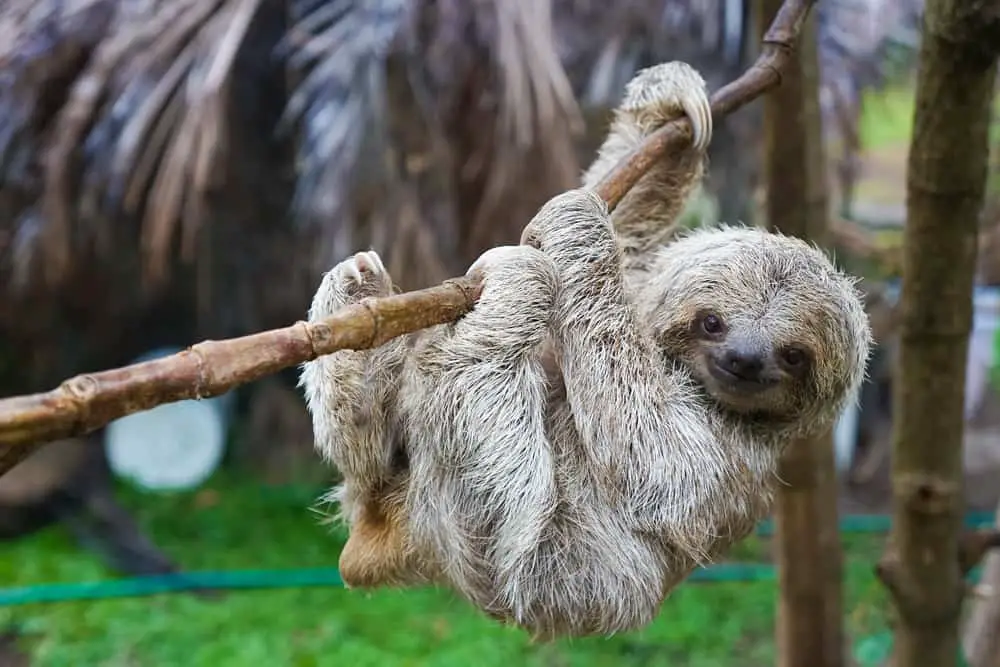
Sloths are arboreal mammals that are known for slow movement. They spend most of their lives hanging upside-down in trees, so they favor forested areas. Their slowness permits them to select and eat leaves, stems, and fruit.
When necessary, sloths do swim. They are surprisingly strong and agile swimmers. They can cross rivers and spans of water between islands.
They look like monkeys, but they don’t have fingers or toes. They use their claws on their hands and feet to forage and hang on trees.
Sloths originated in South America, but have spread to the tropical forests of Caribbean islands and North America. They range 24 to 31 inches long and weigh in at 10 to 17 pounds. They live for 15 years on average.
Sloths are similar to armadillos in that they share the same joint structures in their backbone that permit them to climb easily. Sloths differ from armadillos by not have armor.
Pangolins
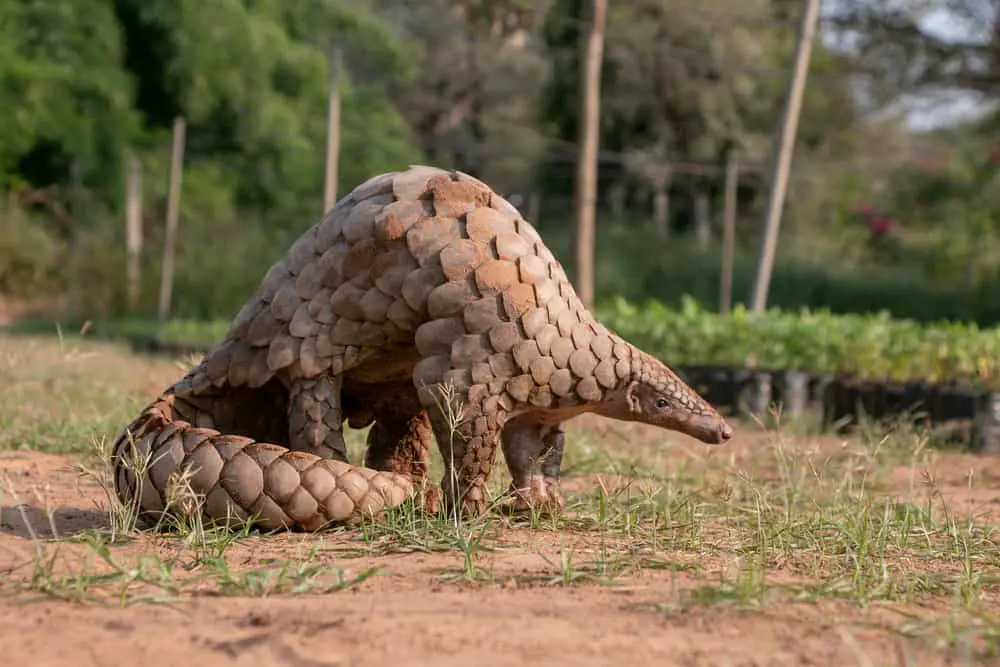
Pangolins are the only mammals entirely covered with scales. They are known as scaly anteaters because they have the same long snout and tongue as anteaters. But their overlapping scales look like plated armor.
They live in hollow trees or burrows. They forage at night for ants, termites, and larvae and feed with their long tongues. They have no teeth. They are solitary creatures, meeting others only for mating and nurturing young.
Pangolins emit noxious smells from glands much as skunks do for defense. They also curl up into a ball when threatened.
Some species live in Asia and others live in sub-Saharan Africa. They favor They range from 12 to 39 inches long and weigh in at 3.5 pounds to 75 pounds. They have lived to 20 years in captivity. Their lifespan in the wild is unknown.
Pangolins are like armadillos in that they are armored. They are unlike armadillos because their armor looks like overlapping plates while the armadillos’ armor looks like overlapping rings.
Turtles
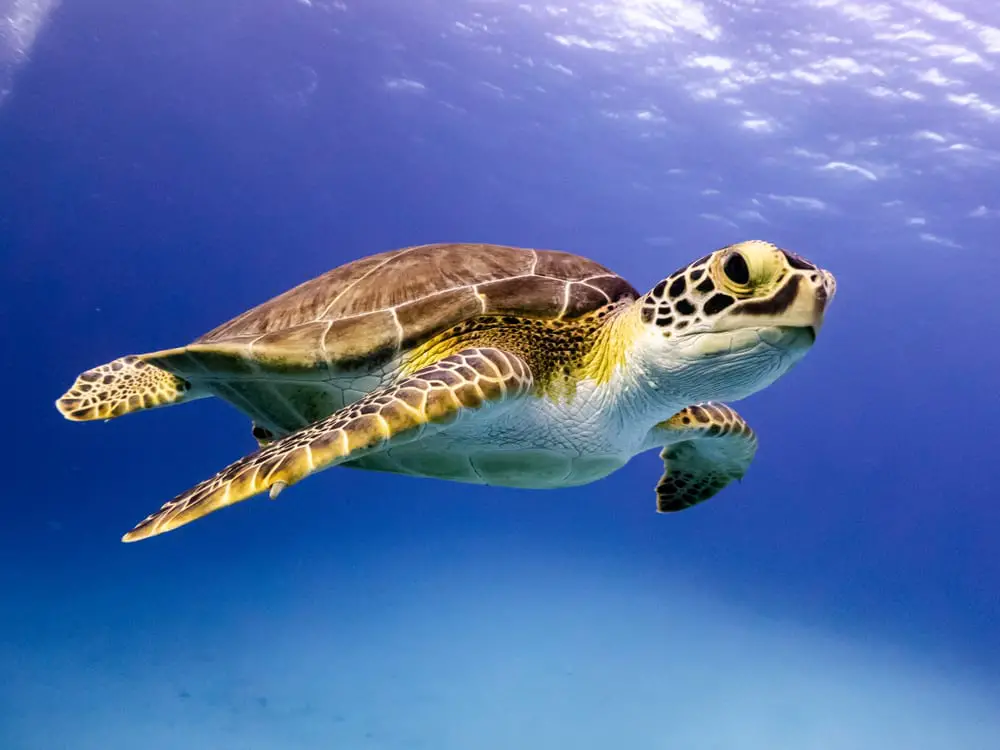
Turtles are reptiles, the only vertebrate with complete shells. The word encompasses a whole order of creatures who live in widely dispersed places. They are found on every continent, except Antarctica.
Many turtles undergo seasonal migrations. The sea turtle swims for great distances to lay eggs at favored beaches.
The leatherback sea turtle can come in up to a monstrous 2,200 pounds. The length of their shells can range from 4.5 feet to 5.5 feet.
Depending on the species, turtles live from 15 to 200 years or more.
Medium-size turtles, such as the snapper, range from 8 to 18 inches and 10 to 35 pounds. Small turtles range from 4 to 10 inches long and weigh 11 to 18 ounces.
Sea turtles are good swimmers, using their flippers as oars and legs as rudders. They spend time underwater but must surface to breathe.
Land turtles must have a source of freshwater, but some can live in deserts.
Turtles are omnivores, feeding on plants, mollusks, and worms. Predators, such as snapping turtles, feed on any animal small enough for it to eat, including other turtles.
Turtles are like armadillos in that they both have armor. Turtles are different in that their armor is in the form of a shell.
Tortoises
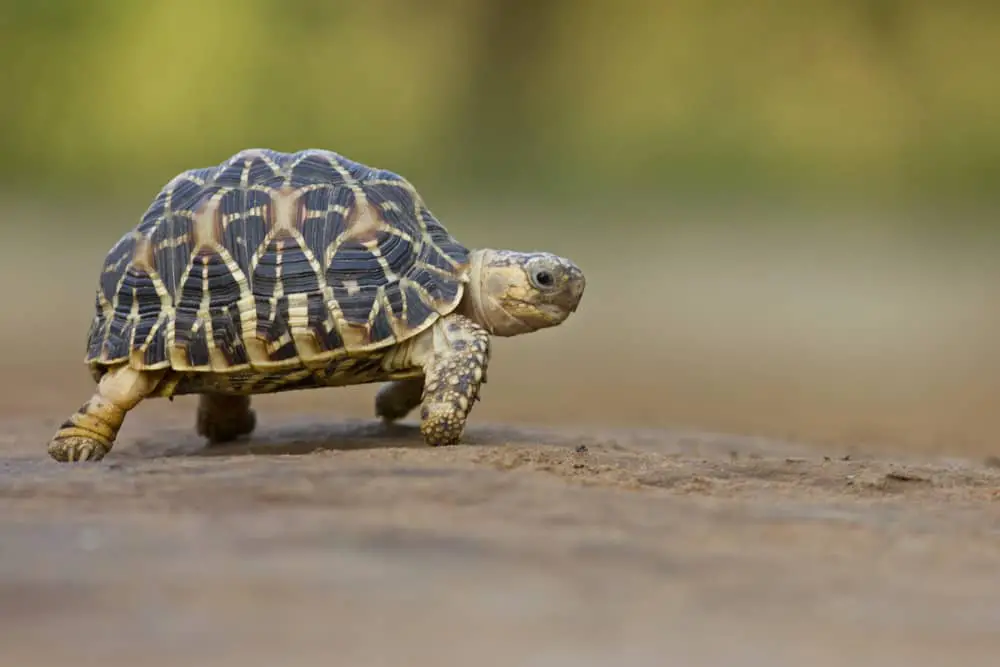
Tortoises are reptiles. They are similar to turtles, except that they live only on land. They live in every continent except Australia and Antarctica.
They favor warm and humid environments where they feed on plants, extracting water from every bite.
They move slowly, crawling with forelegs and hind legs along the ground. They bury their eggs underground. The young break through the shell when they are big enough to survive outside.
Tortoises’ size and weight are extremely varied, depending on species. They range from 4 to 5 inches and less than a pound to 3 to 4 feet and 350 to 550 pounds. Most tortoises live 80 to 150 years. Some have lived to be over 250 years.
They are like armadillos in that they both are armored. They are unlike armadillos because the tortoise has a shell and the armadillo does not.
Terrapins
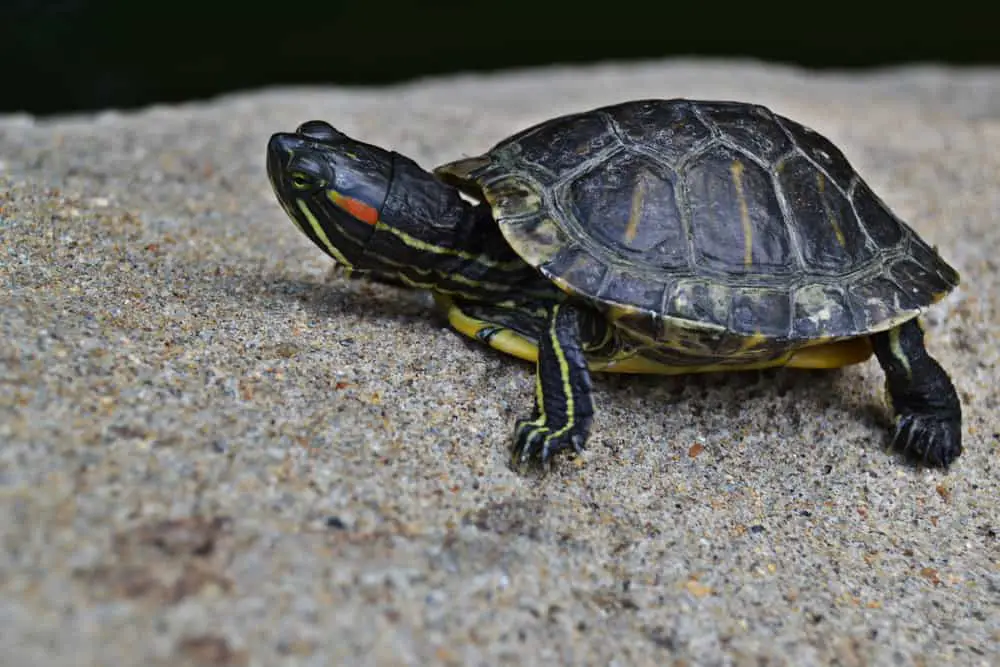
Terrapins are reptiles that are related to turtles. They have shells and live in fresh or brackish water. They are found in Asia, North America, Europe, and Southern Africa.
They grow to 9 inches long and weigh in at 10 to 12 pounds. They live to be around 15 years.
They feed on live fish. They also eat some vegetables.
Terrapins are like armadillos in that they are well protected by their shells. They are unlike armadillos in that they live in water and catch live prey.
Indian Rhinoceroses
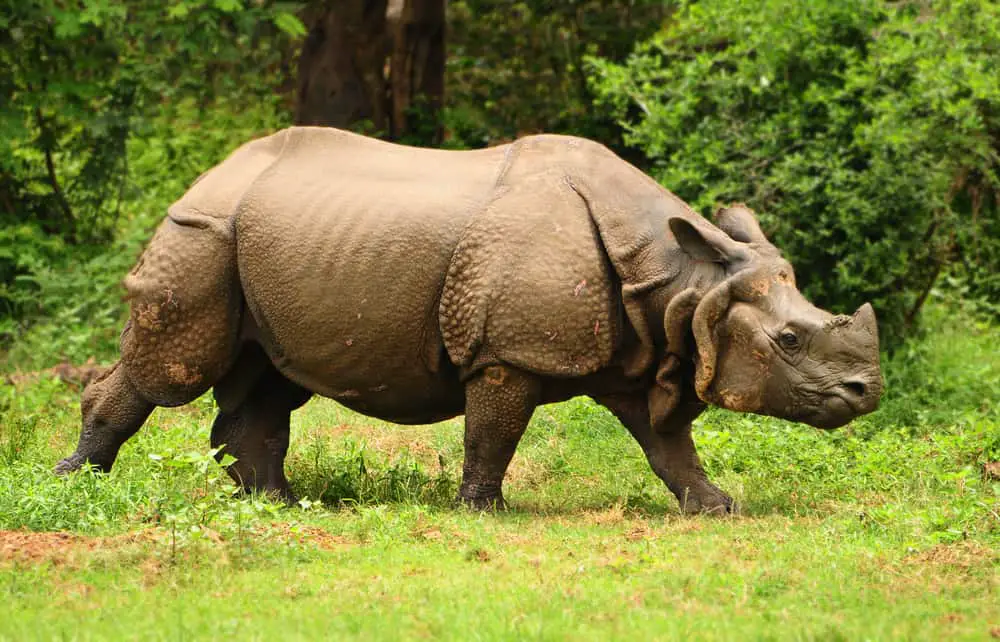
Indian Rhinoceroses are mammals that live in the Indian subcontinent. They have thick gray-brown skin that looks like plate armor and one upright horn on the tip of the nose.
These rhinoceroses are excellent swimmers and good sprinters on land, running up to 34 mph for short distances.
They are hefty animals, weighing in at 3,500 pounds to 4,800 pounds. Their length varies from 10 feet to 12.5 feet, and a shoulder height of 4.8 feet to 6.1 feet. They live from 35 to 45 years.
Male rhinoceroses are solitary, whereas females live in groups with their young. Rhinoceroses feed on land plants. When they swim, they feed on aquatic plants.
Indian rhinoceroses are like armadillos in that they are well protected by their armor and hides, but are unlike them in that rhinoceroses have hides instead of armor. They are also far larger than armadillos.
Thorny Devils
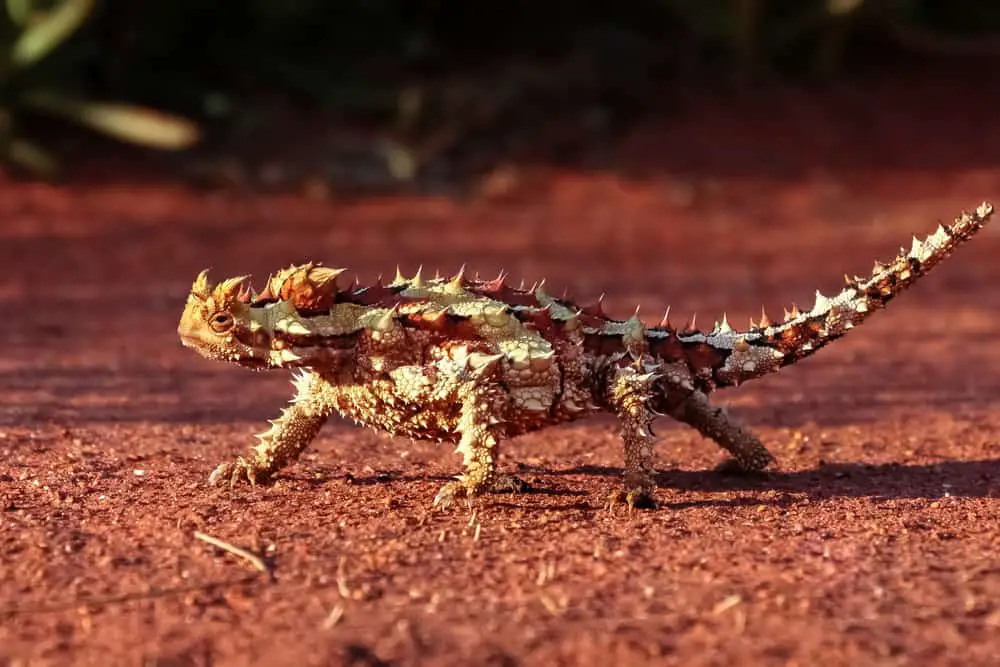
The Thorny Devil is a lizard, a reptile that lives only in Australia. Its unusual appearance is caused by sharp, thorny spines that cover its body which serves as a deterrence to predators. It can change color to blend in with its surroundings.
It grows to be 8.3 inches in length and weighs in at 2.5 ounces to 3.4 ounces. It lives 15 to 20 years.
It favors the scrubland and arid areas of central Australia. It eats thousands of ants a day. It freezes and rocks as it slowly looks for ants.
It’s similar to the armadillo in that it is well protected by its covering. It’s different in that the covering is spiny instead of armor.
Alligators
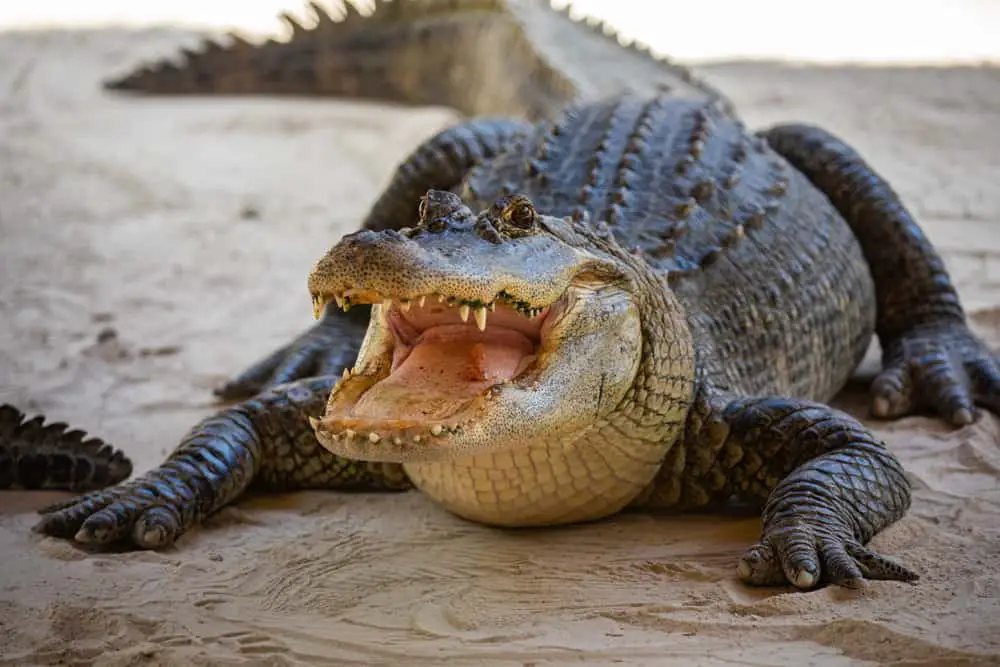
Alligators are reptiles that favor a freshwater environment, including swamps, ponds, and rivers. They live in the subtropical regions of North America.
They feed on fish, birds, mammals, turtles, snakes, and fruit. Their long, scaly bodies permit them to swim fast and to engage in surprise attacks on their prey. They often live and hunt in packs, although they are perfectly capable of hunting solo.
They are large, weighing in at 770 pounds to 990 pounds. Their length varies from 13 feet to 14 feet. They live to be 30 to 40 years old.
They are similar to armadillos in that their scales protect them as the armadillo armor protects them. But they are different in that they are far larger and hunt in water.
Saltwater Crocodiles
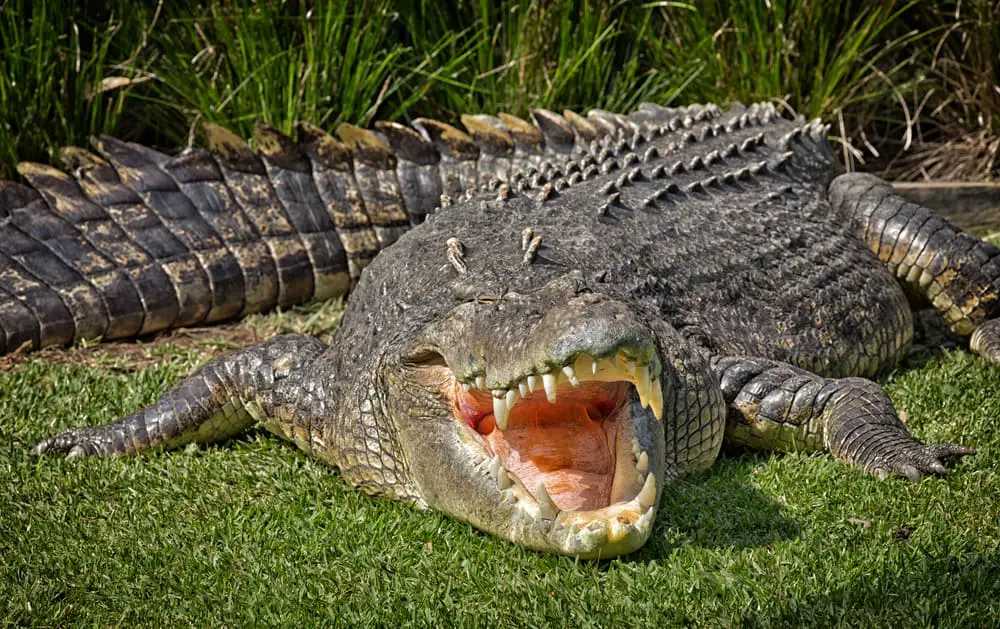
Saltwater Crocodiles are reptiles that live along the oceans in the Americas, Asia, and Australia. They favor brackish swamps and deltas. They eat fish, snakes, deer, and even larger mammals.
They range in size from 14 feet to 16 feet and weigh from 900 to 1,150 pounds. They live 70 to 100 years.
Their long, scaly bodies make them effective swimmers. They stalk their prey and strike quickly.
They are similar to armadillos in that they are well protected by their scales, but differ from them in that they are far larger and are carnivores.
Sea Urchins
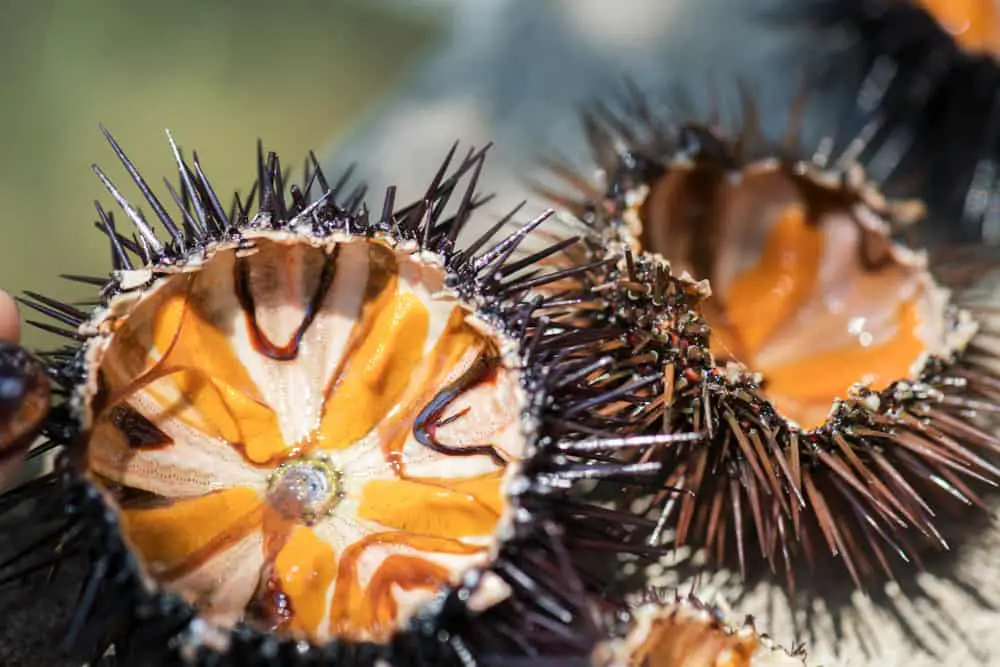
Sea Urchins are invertebrates, part of the class known as Echinoidea. They live in the sea beds of all oceans. They are protected by hard shells. Their spheres of spines make them look like underwater flowers. But, they are animals.
They trap and digest microscopic food with their mouths which are located on the lower part of the trunk.
They are small, standing only 1 to 4 inches high, although they may spread out to 14 inches wide. They weigh only 1 pound. They can live over 100 years.
They are similar to armadillos in that they are well protected by their hard shell. They differ in that they live underwater.
Crabs
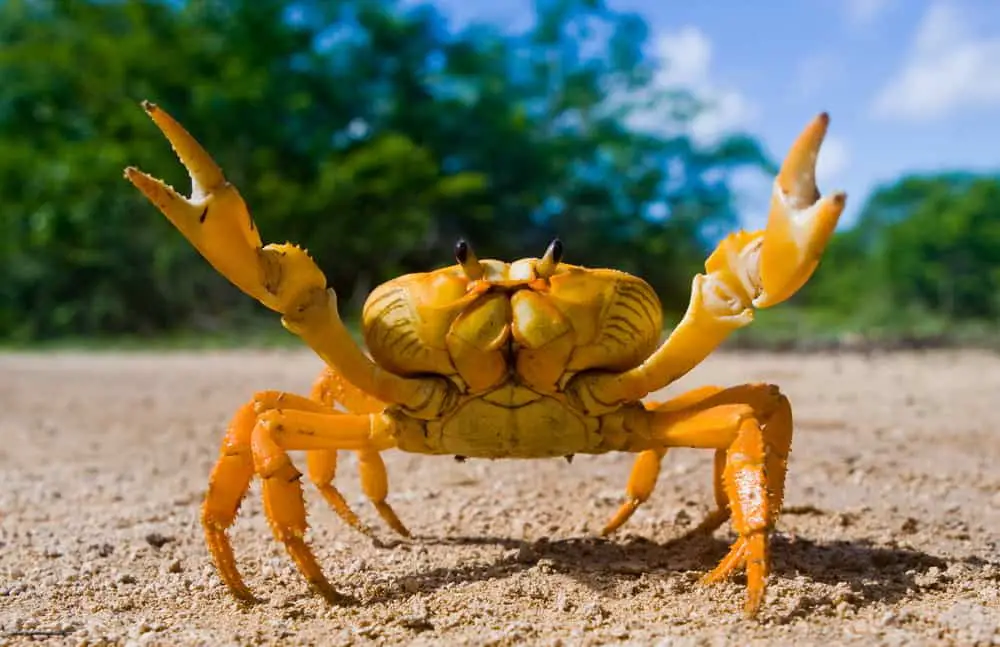
Crabs are crustaceans that have short tails and pincers. They are covered by a thick exoskeleton. They live in the world’s oceans and get their food through their good sense of smell. They eat barnacles, fish, plants, even other crabs.
Females release freshly hatched larvae into the water. The young float and live off the nutrients in the yolk until they’ve grown enough to swim.
Crabs grow from 5 inches to 7 inches. They weigh 1 pound. Depending on the species, crabs can live from 1 to 20 years.
Crabs are similar to armadillos in that they are protected by their exoskeletons. They differ in that they are not mammals and live in the sea.
Lobsters
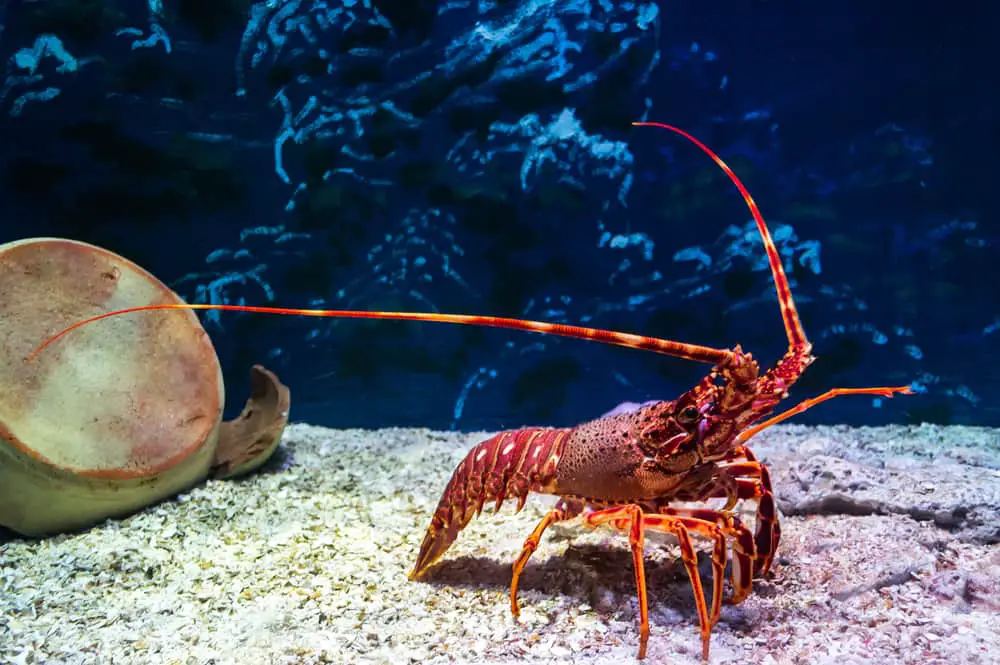
Lobsters are crustaceans that live in the world’s oceans. They have hard exoskeletons. Some species have claws and others don’t.
They eat mussels, fish, clams, and other crabs. Those with claws use them to crack open hard shells and exoskeletons and then extract the food.
They live up to 50 years in the wild. They weigh from 1 to 4 pounds and grow to 8 to 24 inches long.
They are similar to armadillos in that they are protected by their exoskeletons, but different in that they are not mammals and live in water.
Crayfish
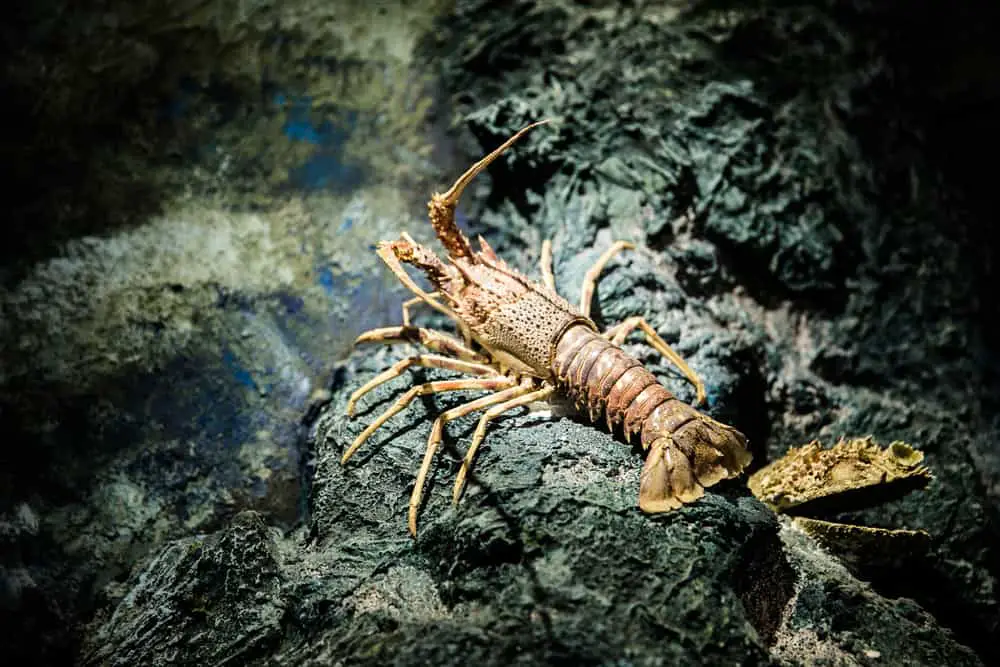
Crayfish are small crustaceans. Most of them favor freshwater, but some species live in saltwater. They can be found in all the oceans of the world. They look like small lobsters. They have hard exoskeletons.
Crayfish are omnivores. They eat plants, vegetables, dead fish, and worms.
They are similar to armadillos in that they are protected by their exoskeletons, but different in that they are not mammals and live in water.
They grow to be 1.5 inches to 8.5 inches. The larger ones weigh in at 8 pounds. They live to be 25 years.
They are similar to armadillos in that they are well protected by their exoskeletons but different in that they are not mammals and live in water.
Shrimp
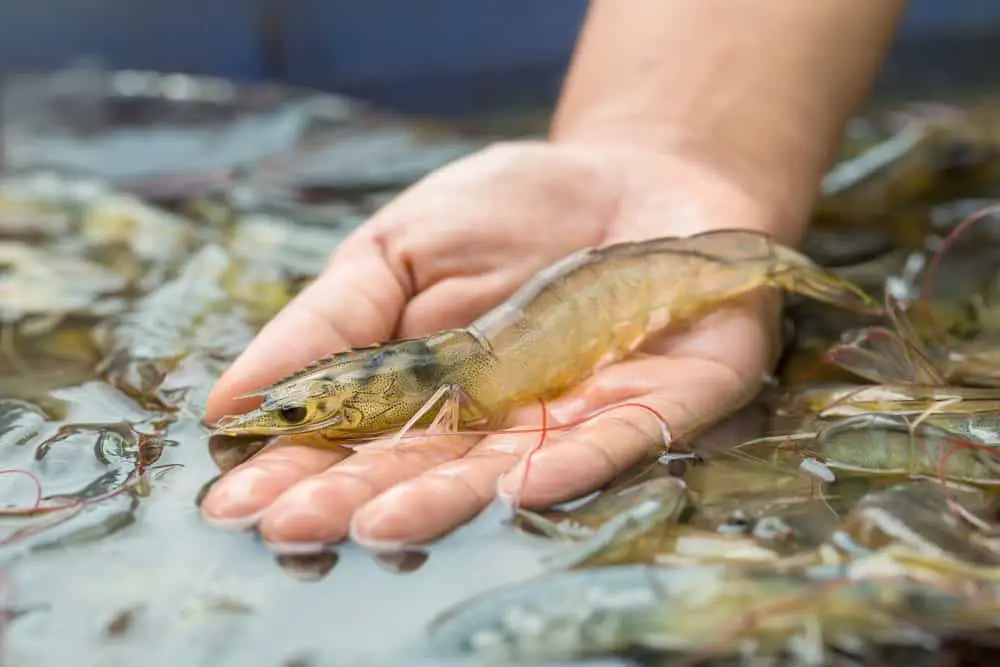
Shrimp are crustaceans with elongated bodies. There are thousands of species that live in every ocean of the world.
They move along the ocean floor and hunt for any algae or dead plant they can find. They range in size from 1 inch to 8 inches. The largest weigh in at only 2 ounces.
They are similar to armadillos in that they are well protected by their exoskeletons but different in that they are not mammals and live in water.



